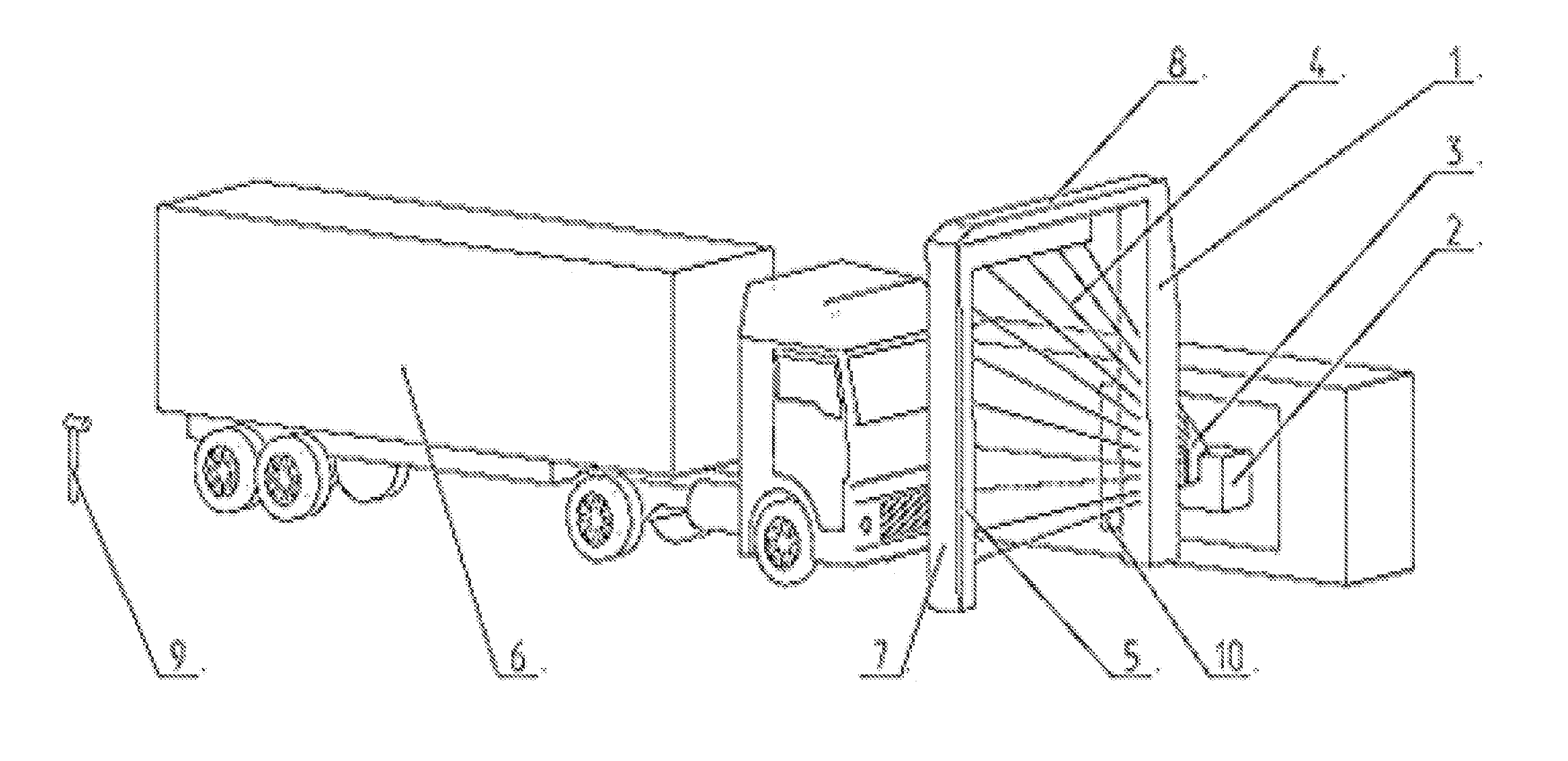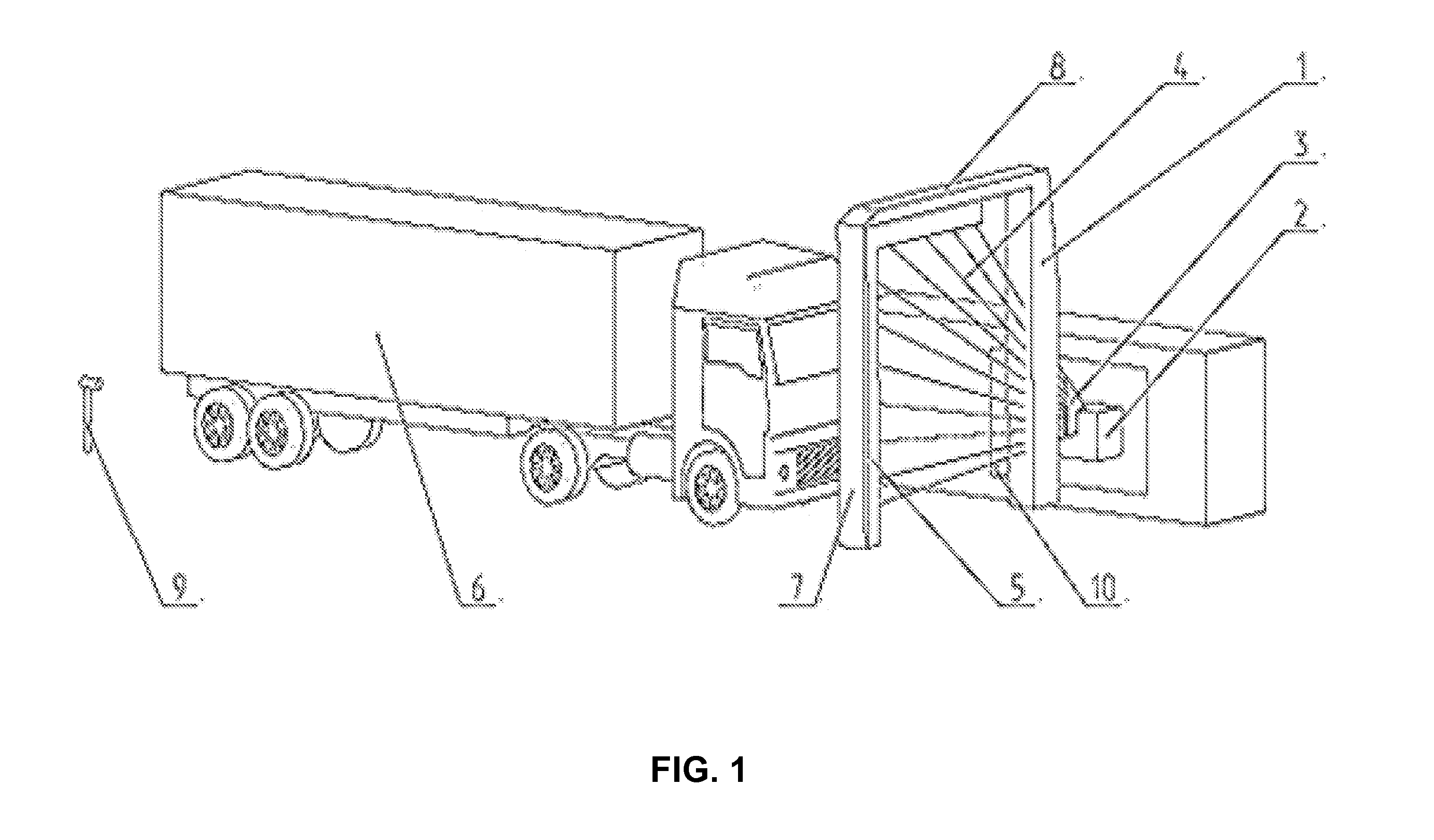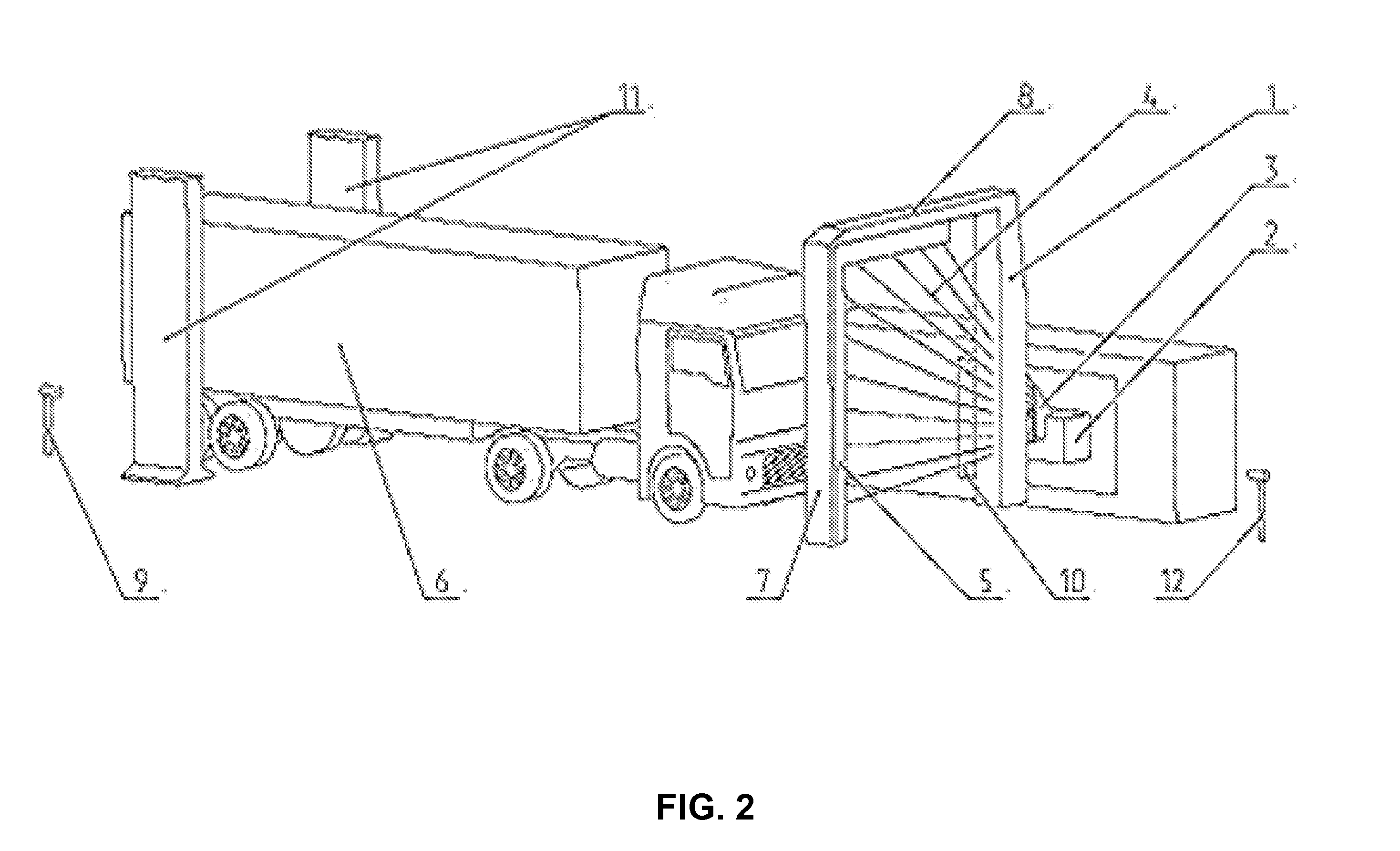Cargo and vehicle inspection system
a technology for loading vehicles and moving sources, applied in the field of xray inspection technology, can solve the problems of substantial loss of time for both the operators of the inspection system and the drivers, low throughput of systems with moving sources and detectors of x-ray radiation, and low reliability
- Summary
- Abstract
- Description
- Claims
- Application Information
AI Technical Summary
Benefits of technology
Problems solved by technology
Method used
Image
Examples
Embodiment Construction
[0037]Reference will now be made in detail to the preferred embodiment of the present invention, examples of which are illustrated in the accompanying drawings.
[0038]The apparatus for X-ray scanning of vehicles, according to the preferred embodiment, is shown in FIGS. 1, 2 and 3, and includes the portal 1, which has an X-ray radiation source 2 installed on one side. The X-ray source 2 includes a collimator 3, used for forming a fan-shaped X-ray beam 4. Opposite the source 2, a detector 5 is positioned, to receive the radiation passing through the vehicle, and to transform the received radiation into a digital electrical signal. In the illustrated example, the vehicle for which the radiation passes is designated by 6. In this example, the detector 5 is located on the vertical beam 7, and on the top horizontal beam 8 of the portal 1. A velocity measurement device 9 is also optionally included, to measure the speed of the vehicle 1. In the illustrated example, the velocity measurement ...
PUM
| Property | Measurement | Unit |
|---|---|---|
| energy | aaaaa | aaaaa |
| energy | aaaaa | aaaaa |
| energy | aaaaa | aaaaa |
Abstract
Description
Claims
Application Information
 Login to View More
Login to View More - R&D
- Intellectual Property
- Life Sciences
- Materials
- Tech Scout
- Unparalleled Data Quality
- Higher Quality Content
- 60% Fewer Hallucinations
Browse by: Latest US Patents, China's latest patents, Technical Efficacy Thesaurus, Application Domain, Technology Topic, Popular Technical Reports.
© 2025 PatSnap. All rights reserved.Legal|Privacy policy|Modern Slavery Act Transparency Statement|Sitemap|About US| Contact US: help@patsnap.com



